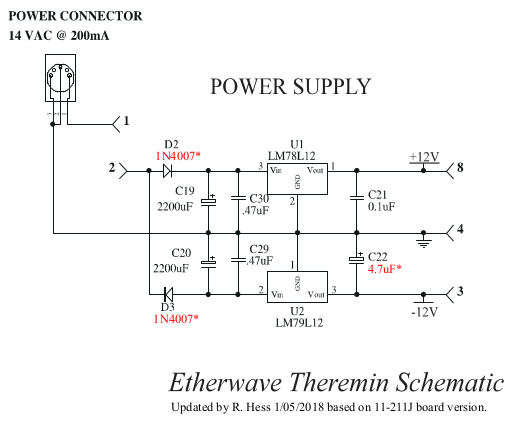Trying to figure out what's going wrong with my power circuit for the theremin described here. Simple circuit that takes 12VAC to make a dual polarity 12VDC supply. The points which should measure +16 and -16 read +-17.5V instead, but I assumed that was because of no load. The positive output generates about 11.8V, which is fine, but the negative output generates -.6V instead of -12. My power supply is a Jameco ADU120200 which is 12VAC and 2A and I'm using one of those little wiring harnesses that plugs on to the adapter. I am absolutely positive that my circuit is correct, I've built it with different organizations, spread out, clumped, on a breadboard, on a prototyping board, all to the same result. What am I doing wrong??
I also noticed that the LM78L12 pinout on the schematic from Moog doesn't match the datasheet, IN/OUT are flipped compared to the official datasheet from TI. Didn't try it with Moog's pinout, as I'm fairly certain that would blow up one of those massive 2200uF caps.





